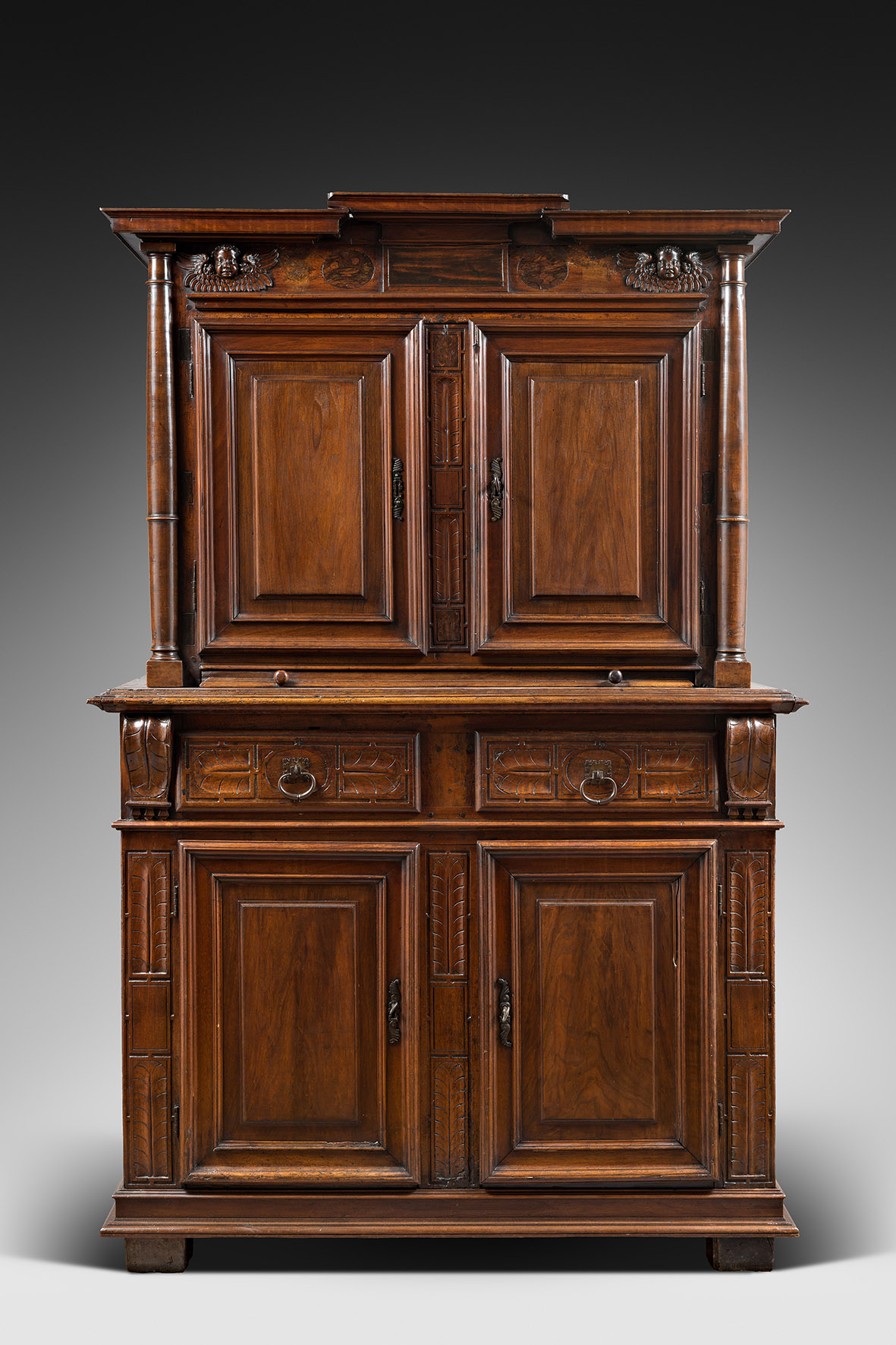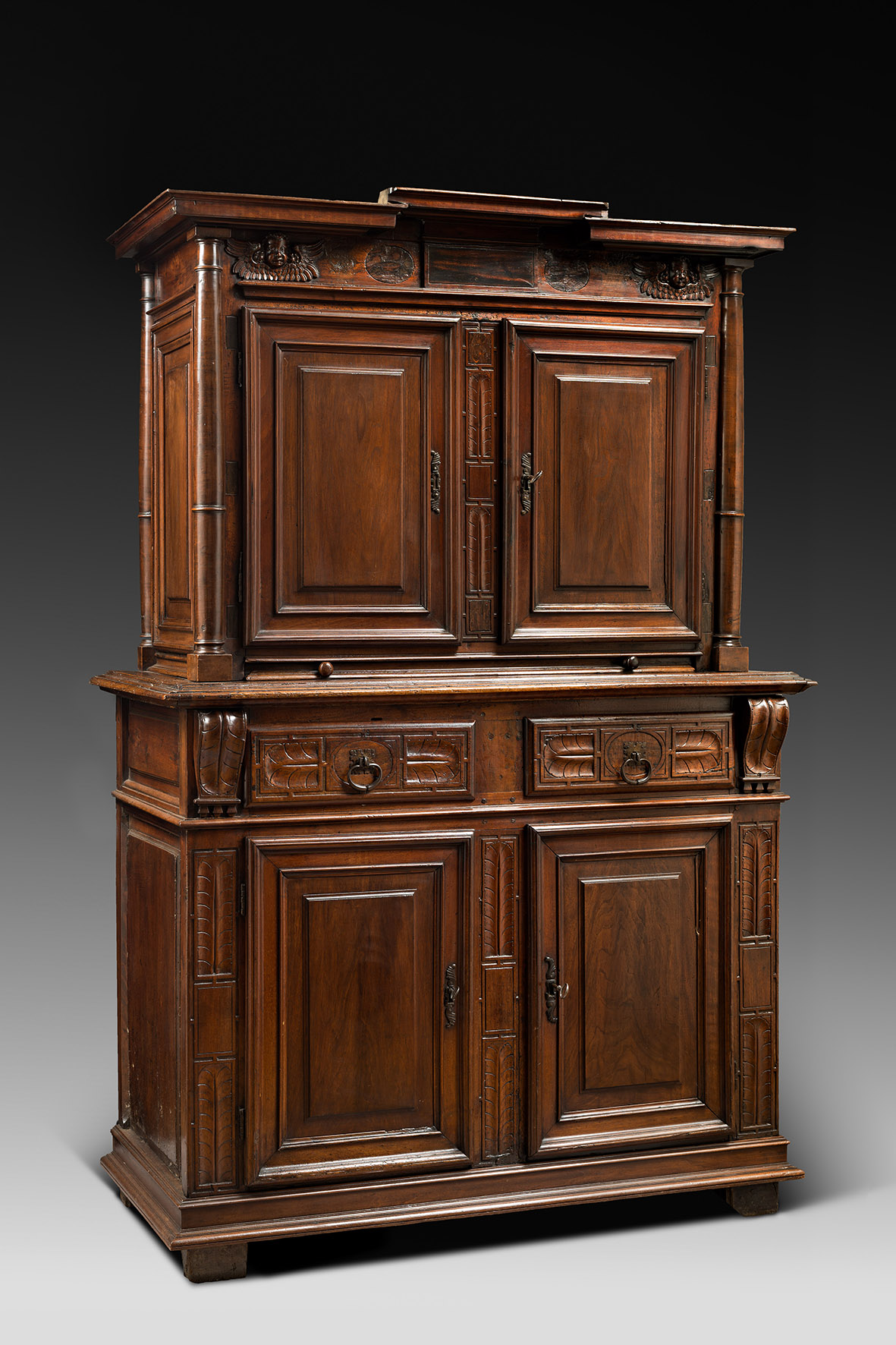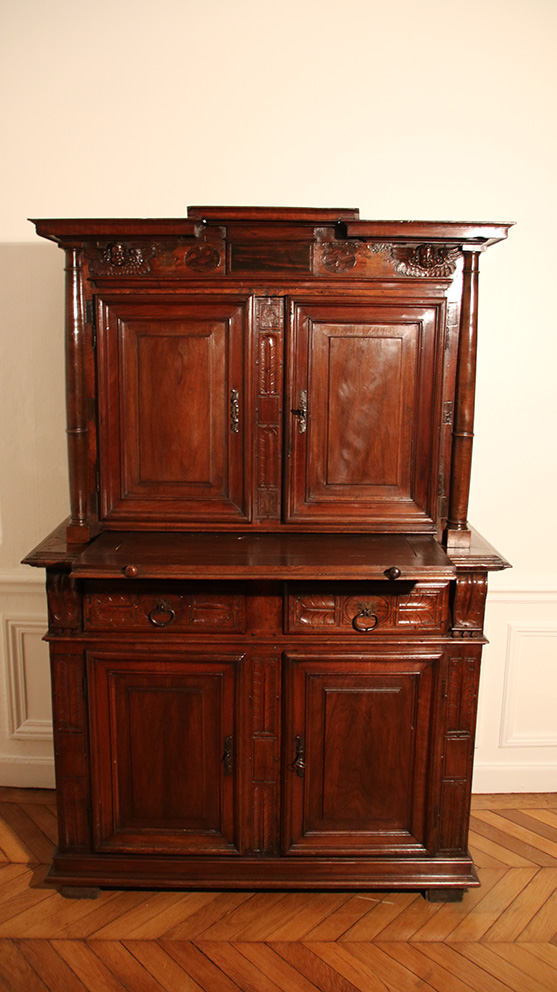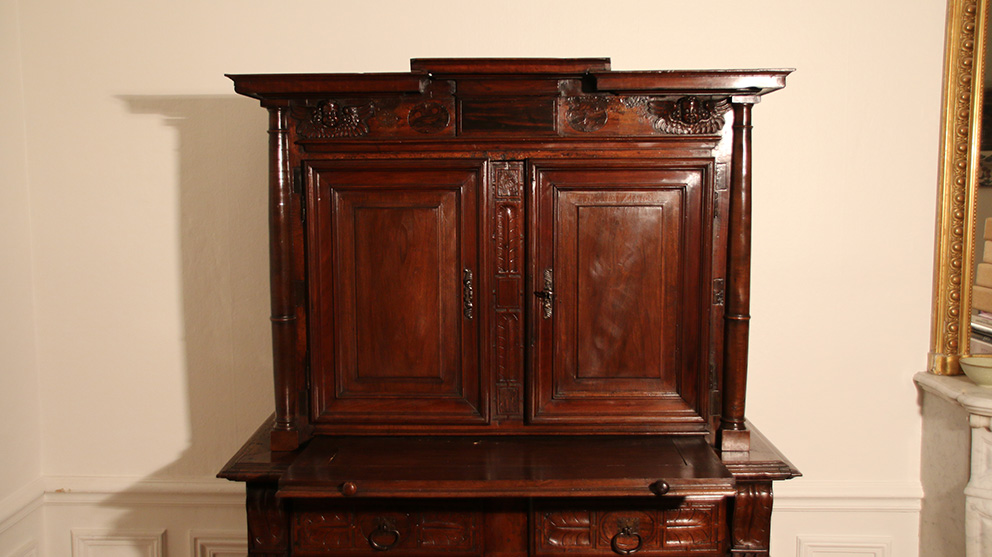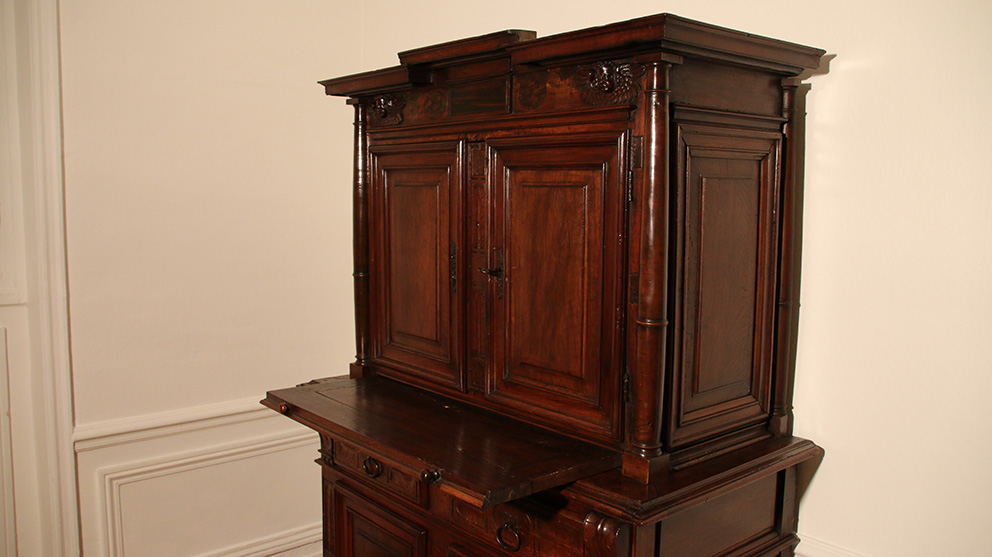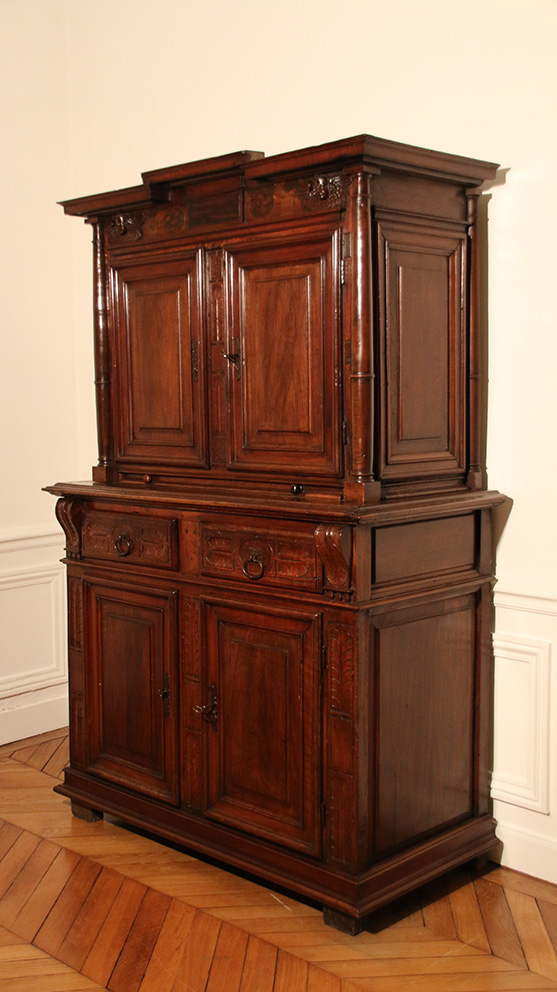Description
At the beginning of the reign of Henri II (1547-1559) the furniture’s ornamentation evolves. The few medieval motifs that were still used are eventually relinquished. Furniture becomes more sober showcasing moulded panels and perfect architecture. Cabinet-makers use ornaments such as curved fluted or plain columns, feather quills, roses or winged putti heads. High-relief carving becomes more scarce and compositions lighter. To that end cabinet-makers draw inspiration from Fontainebleau motifs filtering them and adapting them to French taste.
During this period cabinet-makers turn into a kind of architects. Indeed the architectural balance of furniture is the centre of their concerns. The study of Antic formulas is then a necessity. From this care given to proportions appear refined cabinets with pure lines.
This style is characteristic of the reign of Henri II and disappears soon after under the regency of Catherine de Medici (1560-1574) when an abundance of high and low-relief ornaments comes back on furnitures.
This two-bodies cabinet shows a slight recess and opens with four door-leaves and two drawers in the belt.
It stands on a moulded base from which rise quill feathers and cartouche ornated posts framing the door-leaves. The recessed panels are mitre-cut assembled and framed by mouldings.
The two consoles located on the belt and the drawers are adorned by quill feathers motifs and geometrical ornaments.
The upper body hides a writing table. The two door-leaves are flanked by slightly curved columns. The lateral posts are inlaid with darkened wood cartouches while the central one bears a feather quills and cartouche ornamentation. Above a moulded ridge are inlaid rectangular and round darkened wood cartouches while the angles are enriched by winged putti head carvings.
A cornice tops the cabinet.
This cabinet perfectly illustrates the production of the second half of the 16th century. With its rigorous architectural structure, the beautiful harmony of its proportions, the simplicity of lines, the sobriety of its decor this cabinet truly is astounding.
Furthermore the quality of its fine and compact red walnut as well as its patina adds to its refinement.
Literature
BOCCADOR Jacqueline, Le Mobilier Français du Moyen-Âge à la Renaissance, 1996, Éditions d’art Monelle Hayot, Saint-Rémy-en-l’Eau.

